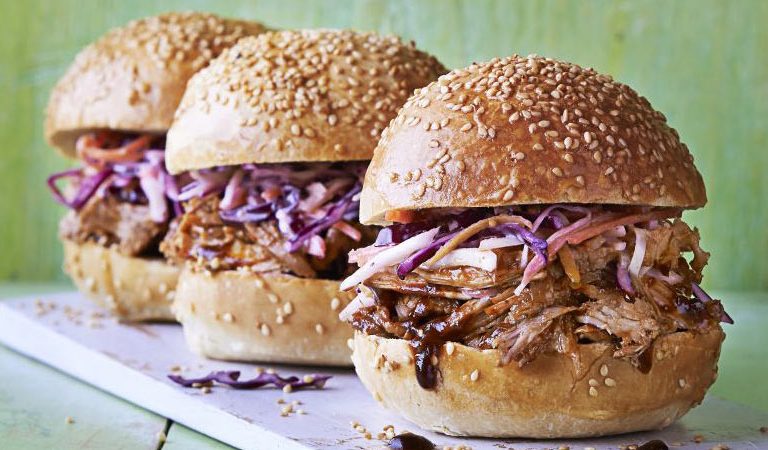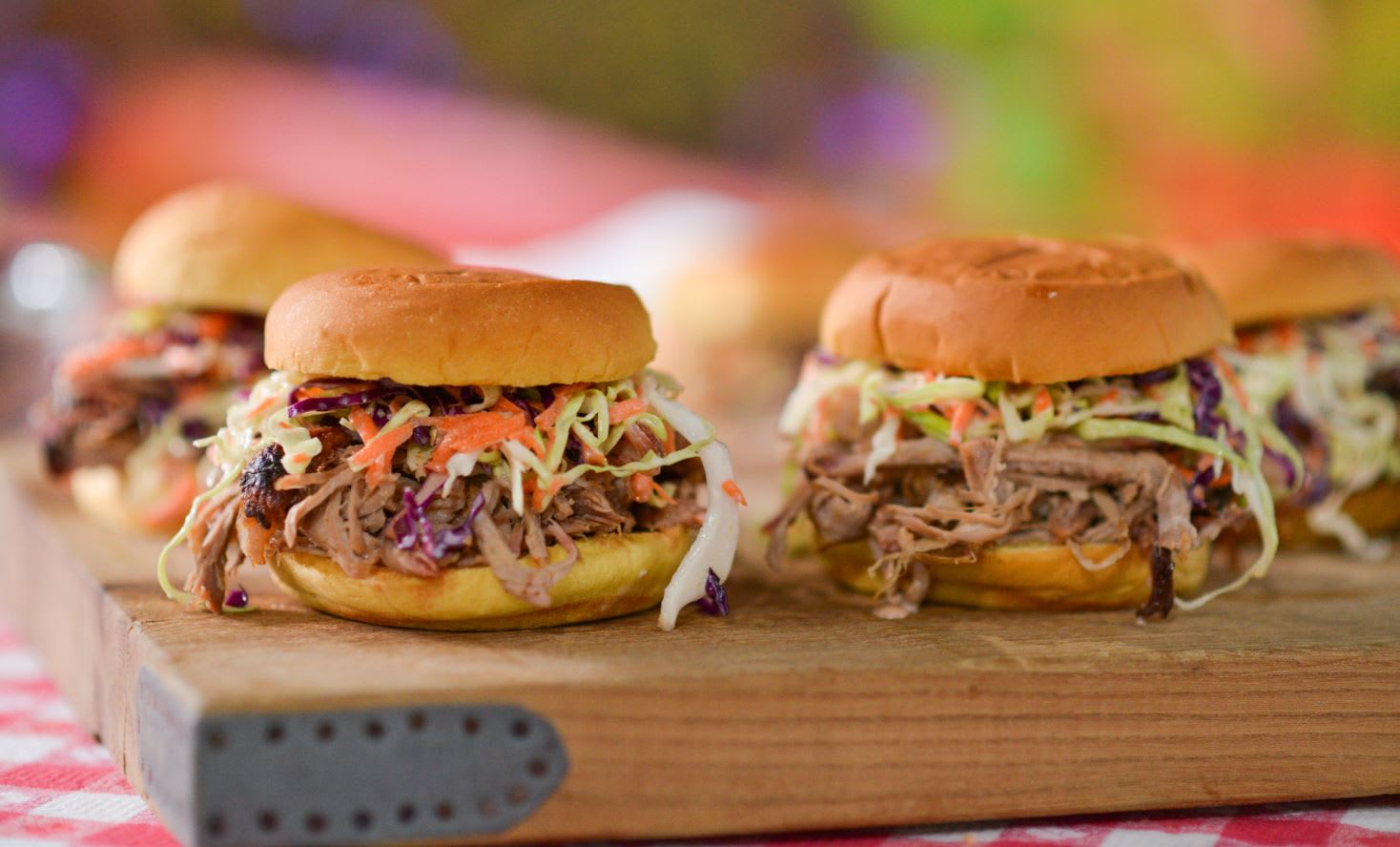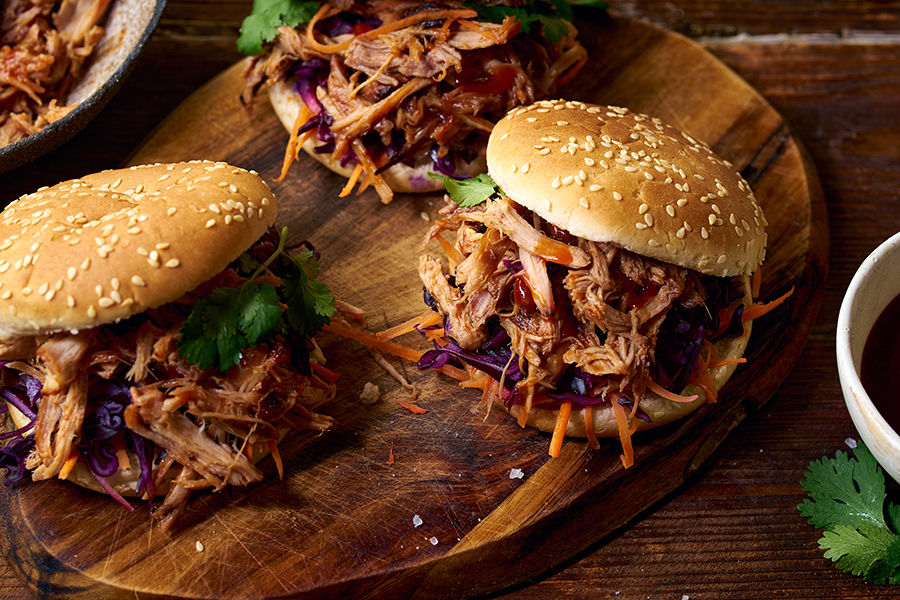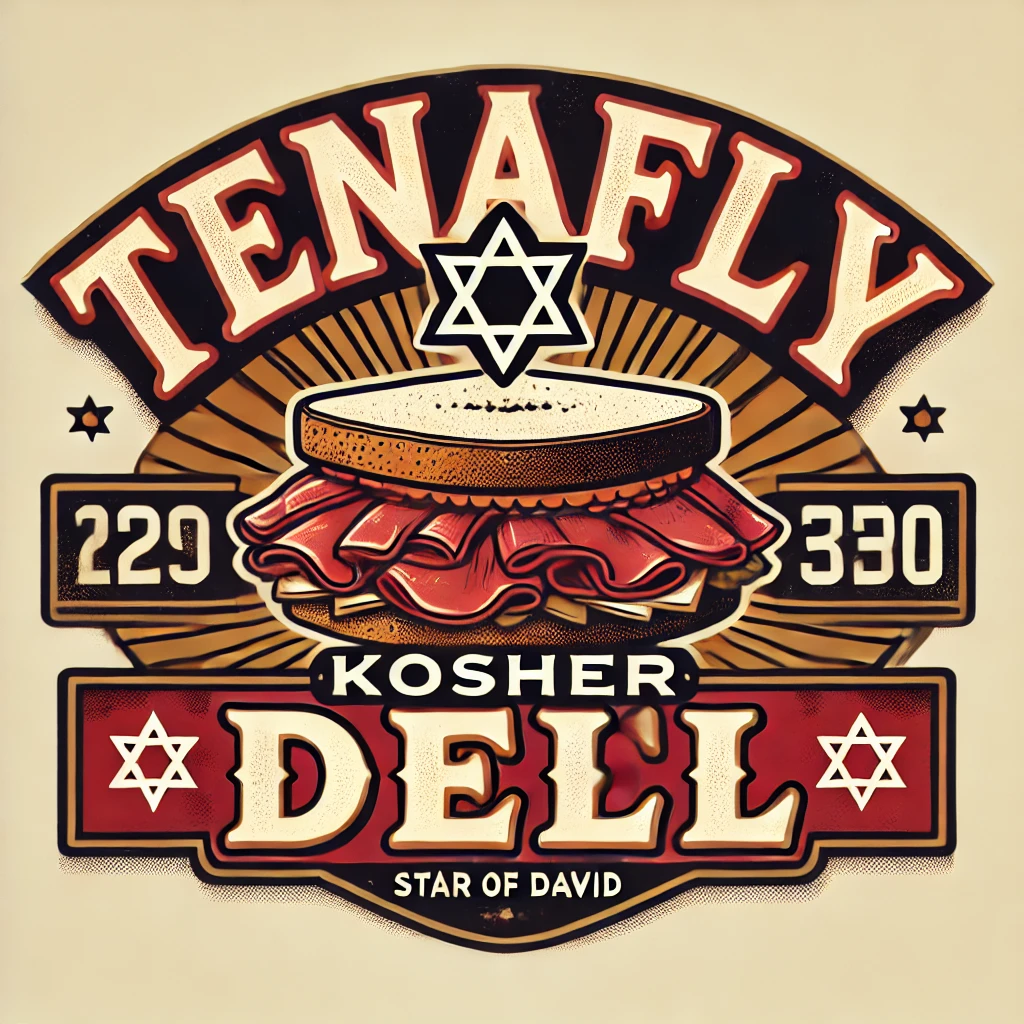Introduction
The main difference between brisket and pulled pork is the type of meat and texture. Brisket is a beef cut that’s typically sliced and has a more robust, smoky flavor, while pulled pork comes from pork shoulder and is shredded with a sweeter, more tender consistency. Brisket is generally more challenging to cook perfectly, while pulled pork is more forgiving for beginners.
Quick Look at BBQ’s Past
Barbecue has been around for ages and has roots in old cultures. While people debate where it started, it’s thought that indigenous tribes first used smoke to keep meat from spoiling. The word “barbecue” comes from a Taino term “barbacoa” which meant a wooden setup for cooking meat over flames.
Over time, BBQ has changed and looks different depending on where you are. In the Southern US, barbecue has developed its unique tastes, influenced by African, European, and Native American cultures. Events like Texas BBQ cook-offs and Carolina pig pickings became more than just meals — they turned into fun events that bring people together and celebrate culture.
Importance of Brisket and Pulled Pork in BBQ
When you think of BBQ, brisket and pulled pork come to mind. These cuts are loved not just for their amazing flavors but also for what they represent in the BBQ world:
- Brisket: Often called the “king of BBQ,” it shows off the skill involved in low-and-slow cooking, needing time and care.
- Pulled Pork: A fan favorite that captures the essence of shared meals, often enjoyed at gatherings and parties.
Together, these meats highlight the BBQ tradition, bringing everyone together with their great tastes. Whether it’s a laid-back backyard cookout or a serious cook-off, they showcase what BBQ is all about.
Brisket vs Pulled Pork: Quick Comparison
Looking for a quick comparison between brisket and pulled pork? Here’s everything you need to know at a glance:
| Feature | Brisket | Pulled Pork |
|---|---|---|
| Cut of meat | Chest muscle of beef | Pork shoulder (also called Boston butt) |
| Typical cooking time | 10-12 hours | 8-10 hours |
| Cooking temperature | 225-250°F (107-121°C) | 225-250°F (107-121°C) |
| Target internal temp | 195-205°F (90-96°C) | 195-205°F (90-96°C) |
| Difficulty level | Challenging | Beginner-friendly |
| Flavor profile | Rich, beefy, robust | Sweet, porky, tender |
| Cost | Higher ($$-$$$) | Lower ($-$$) |
| Serving style | Sliced | Shredded |
Brisket: The King of BBQ
What is Brisket?
Brisket is cut from the chest area of cattle and is known for its rich, beefy flavor. It’s a tough cut that gets better when cooked for a long time. That tough outer layer has connective tissue that breaks down beautifully with slow cooking, turning it into tender, juicy meat.
A lot of BBQ lovers really dig brisket, and it’s often the star at competitions and family events. There’s nothing quite like slicing through that perfect outer layer and discovering the juicy meat underneath.
Brisket Smoking Tips
Smoking brisket is an art, and there are a few techniques to master for the best results:
- Low and Slow: Keep the temperature steady between 225°F and 250°F for a few hours.
- Cold Smoking: For an extra flavor kick, smoke the brisket at a lower temp before you really cook it.
- Using a Smoke Box: Toss in some wood chips for that wonderful smoky taste.
Patience is key; some experts suggest cooking for 1 to 1.5 hours per pound.
Popular Brisket Rubs and Sauces
A great rub can take your brisket to the next level. Here are some popular mixes:
- Basic Rub: Just salt, pepper, and garlic powder.
- Sweet and Spicy: Brown sugar, paprika, cayenne, and pepper.
- Texas-style: Simply salt and pepper to let the beef shine.
When it comes to sauce, some folks love a tangy tomato-based BBQ sauce, while others prefer their brisket without any sauce, letting the smoky flavor do all the talking. Either way, brisket is the unquestionable king of BBQ.

Pulled Pork: The Crowd Favorite
What is Pulled Pork?
Pulled pork is a tasty dish made from pork shoulder, often called the Boston butt or picnic shoulder. This cut is great because of its mix of fat and lean meat, making it perfect for slow cooking. When cooked just right, it’s so tender that you can shred it with a fork, creating juicy strands full of flavor.
Having had pulled pork at many family gatherings, I can’t resist the comforting smell of it cooking, bringing back memories of summer BBQs filled with friends and laughter.
Ways to Cook Pulled Pork
There are plenty of ways to prepare pulled pork:
- Slow Cooker: A hands-off method that delivers moist and tasty results.
- Smoker: Smoking at low temps (around 225°F) enhances the rich flavors.
- Oven Roasting: A reliable option for when grilling isn’t possible; roasting at a lower temperature with foil keeps it tender.
Signature Pulled Pork Seasonings
A great pulled pork starts with a killer seasoning. Here are some must-try options:
- Basic Dry Rub: Brown sugar, paprika, garlic powder, and black pepper.
- Southern-style Rub: Toss in mustard powder, cayenne, and chili powder for some heat.
- Carolina-style Vinegar Sauce: A mix of apple cider vinegar, mustard, and spices adds a tangy twist before serving.
With its versatility and mouthwatering flavor, pulled pork is always a winner at BBQs and get-togethers.

Brisket vs Pulled Pork: A Flavorful Comparison
Flavor Profiles of Brisket and Pulled Pork
Both brisket and pulled pork have unique flavors that appeal to different tastes. Brisket is known for its rich, beefy taste, especially when complemented by a perfect smoky bark, which is a dream for meat lovers. Pulled pork, on the other hand, offers a smoky, savory experience that brings out the natural sweetness of the meat.
- Brisket: Bold and hearty with a rich umami kick.
- Pulled Pork: Mild and slightly sweet with a smoky background.
Textural Differences
These BBQ staples also differ in texture, thanks to their cooking methods. Brisket, being tougher, can melt in your mouth when cooked right, creating a tender yet meaty experience. Meanwhile, pulled pork has that satisfying stringy texture that easily falls apart with a fork.
- Brisket: Dense and juicy — great when sliced thin.
- Pulled Pork: Soft and tender — perfect for piling high on a bun.
Cooking Time and Preparation
Both brisket and pulled pork need patience, but their cooking times and methods do differ:
- Brisket: Usually takes 10 to 12 hours in a smoker, often requiring a good rub and some rest time to develop its bold flavor.
- Pulled Pork: Typically cooked for 8 to 10 hours, making it a bit more forgiving when prepping.
In the end, these differences make each type of meat a special treat for any BBQ feast.
Serving and Pairing
Best Side Dishes for Brisket
Brisket is always a star at BBQs, and the right sides can take it to the next level. Here are some classic sides that go perfectly with brisket:
- Coleslaw: The crunchy, cool coleslaw pairs well with the smoky richness of brisket.
- Baked Beans: Their sweetness balances the savory flavors nicely.
- Cornbread: A Southern favorite that adds a wonderful texture and hint of sweetness.
- Pickles: A side of tangy pickles can cut through the richness and refresh your palate.
I hosted a BBQ once where the homemade coleslaw was such a hit that guests kept asking me for the recipe!
Best Drink Pairings for Pulled Pork
Pulled pork goes well with a variety of drinks. Here are some crowd-pleasers:
- Iced Tea: A classic choice, especially sweet tea, is always refreshing.
- Craft Beer: Something hoppy or fruity enhances the smoky taste.
- Hard Cider: Its crispness balances the richness of the pork really well.
After trying out different drinks, I found that a chilled hard cider is the perfect pair for my smoky pulled pork!
Presentation Tips for BBQ Parties
Setting up your BBQ can wow your guests. Consider these tips:
- Use Wooden Boards: They add a rustic feel for serving your meats.
- Label Your Dishes: Small signs help your guests identify each dish.
- Colorful Garnishes: Fresh herbs like parsley can brighten up the table.
Making your spread visually appealing not only looks nice but also highlights the delicious food. Happy BBQing!

Health Considerations
Nutritional Comparison of Brisket and Pulled Pork
In terms of health, brisket and pulled pork come with their own ups and downs, and knowing the differences can help you choose wisely.
- Brisket: Usually lower in fat and calories per serving, it also packs in essential nutrients like iron, potassium, and B vitamins, which makes it a bit healthier when enjoyed in moderation.
- Pulled Pork: While it’s full of flavor and flexible in recipes, pulled pork tends to be higher in fat and calories depending on how it’s prepared, so it may not be as healthful as brisket.
I remember once discussing these differences with pals at a BBQ, which led to a fun chat about balancing indulgence with health.
Healthy Cooking Tips
If you want to enjoy these BBQ staples while being health-conscious, consider these tips:
- Trim the Fat: For both brisket and pulled pork, cut off the extra fat before cooking to lower calories and fat.
- Use Lean Cuts: Choose cuts with less fat or use the leaner parts.
- Focus on Flavorful Marinades: Use herbs and spices for flavor without piling on calories.
- Mind the Sauces: Select lower-calorie or homemade sauces to keep added sugars and fats in check.
With these tips, you can enjoy the bold tastes of brisket and pulled pork without sacrificing your health goals.
Popular BBQ Recipes
Classic Brisket Recipe
To get delicious brisket, start with a good cut and a simple rub. Here’s an easy recipe:
- Ingredients:
- 5-6 pounds of beef brisket
- 2 tablespoons kosher salt
- 2 tablespoons black pepper
- Optional: garlic powder and paprika for a bit more flavor
- Instructions:
- Rub the mix all over the brisket, covering it generously.
- Let it sit for at least an hour (or overnight in the fridge).
- Smoke at 225°F for 10-12 hours or until it’s tender and pulls apart easily, using your choice of wood for flavor.
Sharing a brisket sandwich with friends during summertime BBQs always brings back some great memories!
Traditional Pulled Pork Recipe
Here’s how to whip up some amazing pulled pork:
- Ingredients:
- 4-5 pounds of pork shoulder (Boston butt)
- 2 tablespoons brown sugar
- 2 tablespoons paprika
- 1 tablespoon garlic powder
- Salt and pepper to taste
- Instructions:
- Rub the seasoning all over the pork shoulder.
- Cook in a smoker or slow cooker on low for 8-10 hours until it shreds easily.
- Serve on buns with coleslaw.
The smell of pulled pork cooking always reminds me of family gatherings.
Fun Ways to Use Leftover Brisket and Pulled Pork
Don’t let those tasty leftovers sit around. Here are some fun ideas:
- Brisket Burnt End Tacos: Shred leftover brisket, warm it up in a taco shell, and top with fresh salsa and avocado.
- Pulled Pork Nachos: Layer tortilla chips with melted cheese, pulled pork, jalapeños, and drizzle with BBQ sauce.
- Brisket Chili: Chop up some brisket and throw it in your favorite chili recipe for a flavorful twist.
These ideas let you keep the BBQ vibes going all week long, reminding you of those delicious times!

Regional BBQ Styles
Texas BBQ and Its Love for Brisket
Texas BBQ is legendary, especially when it comes to beef, particularly brisket. Slow-smoked over post oak or mesquite wood, Texas brisket delivers a rich smoky taste and a melt-in-your-mouth texture. Unlike other styles, Texas BBQ often skips heavy sauces, letting the quality of the meat shine through.
- Preparation Tip: A salt and pepper rub allows the beef to really take center stage. After hours in the smoker, you’ll have brisket that everyone will talk about!
At a Texas BBQ festival I went to, the brisket was so tender, it fell apart with just a touch.
Carolina BBQ and Its Pulled Pork Tradition
Carolina BBQ is known for its whole hog and pulled pork traditions. With vinegar-based mop sauces, pulled pork becomes the star, showcasing the region’s dedication to flavor.
- Serving Style: Carolina pulled pork is usually served with coleslaw on a bun, adding texture and taste.
I fondly remember enjoying pulled pork sandwiches during a trip to the Carolinas; the flavor balance was unforgettable!
Kansas City BBQ and Its Famous Ribs
Kansas City is recognized for its diverse BBQ scene, featuring a range of slow-smoked meats smothered in thick, sweet sauce. Their ribs are especially well-known, thanks to a unique blend of spices and a flavorful glaze.
- Key Highlight: Burnt ends, from the point of the brisket, are a must-try here, celebrated for their bold flavor and delightful texture.
During a Kansas City BBQ tour, I found a local spot known for their prize-winning ribs, proving their culinary excellence! Each region offers something special, making American BBQ a never-ending culinary adventure.
Frequently Asked Questions About Brisket and Pulled Pork
Which is easier to cook, brisket or pulled pork?
Pulled pork is generally easier to cook than brisket, especially for beginners. It’s more forgiving in terms of temperature control and cooking time. Pork shoulder has higher fat content that helps keep the meat moist even if slightly overcooked, while brisket requires more precision in temperature management and timing to achieve the perfect tenderness.
Which is more cost-effective, brisket or pulled pork?
Pulled pork is typically more cost-effective than brisket. Pork shoulder (the cut used for pulled pork) generally costs less per pound than beef brisket. Additionally, pulled pork usually yields more servings per pound after cooking, making it an economical choice for feeding large groups.
What are the best woods for smoking brisket and pulled pork?
For brisket, oak and hickory are traditional choices that provide strong, robust flavors that complement beef well. Post oak is particularly popular in Texas-style brisket. For pulled pork, fruitwoods like apple, cherry, and peach offer sweeter, milder smoke that enhances pork without overpowering it. Hickory also works well with pork but provides a stronger smoke flavor.
How do I know when my brisket or pulled pork is done?
Both brisket and pulled pork are done when they reach an internal temperature of 195-205°F (90-96°C). However, the true test is tenderness. For brisket, insert a probe – it should slide in with minimal resistance, like going into soft butter. For pulled pork, the meat should easily shred when pulled with forks, and the bone (if present) should slide out cleanly.
Conclusion
Summing Up the Brisket vs Pulled Pork Showdown
In our deep dive into the best of BBQ, brisket and pulled pork come forward as two shining stars, each with dedicated fans. Brisket is celebrated for its rich beefy flavor and amazing bark, winning on flavor depth, while pulled pork steals the show with its tender texture and flexibility.
- Brisket: A true labor of love often seen as the centerpiece in BBQ competitions.
- Pulled Pork: Quick and easy to prepare, forgiving in the cooking process, and perfect for many dishes, from sandwiches to nachos.
Looking back, both meats have qualities that appeal to different tastes and occasions.
Personal Preference and Enjoying Different BBQ Styles
In the end, what you like plays a big part in the BBQ debate. Personally, I love both brisket and pulled pork, and I often find myself craving the smoky goodness of brisket one day and the tangy satisfaction of pulled pork the next.
So whether you’re firing up the grill for a family get-together or hitting up your favorite BBQ joint, it’s all about enjoying the variety. Each bite tells a story, and the joy of BBQ is found in savoring those moments, no matter which meat you pick!

A Bergen County institution celebrating authentic Jewish cuisine since 1985. Our pastrami—brined for 14 days, smoked over applewood for 12 hours, and steamed to perfection—creates a melt-in-your-mouth experience that rivals Manhattan’s finest delis. Our rye bread is baked fresh daily using a century-old recipe from Poland. Featured in Food & Wine’s “Top 10 Delicatessens in America” and on Food Network’s “Best Thing I Ever Ate.” Chef Moshe Greenbaum, a third-generation deli master trained at the Culinary Institute of America, ensures every sandwich meets our exacting standards. No wonder our customers drive from three states away.
Leave a Reply